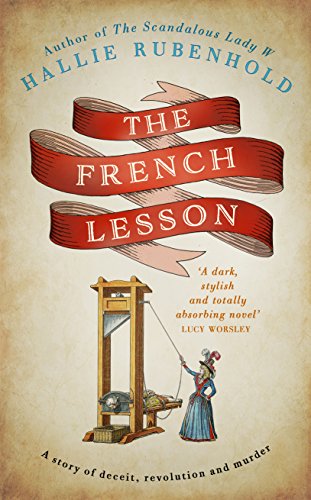The French Lesson
1792. Henrietta Lightfoot, the 19-year-old daughter of an earl, has left behind her country and respectability to live as the paramour of George William Allenham, in Brussels. Used to her lover’s absences, she is at first unconcerned when he is summoned to Paris on diplomatic business, but after he sends a letter that hints at some secret distress, she decides to follow him to the French capital. Braving several mishaps, Hetty arrives in Paris only to discover that she is unable to trace Lord Allenham, and she soon finds herself in the unenviable position of having to serve as the go-between to two rivaling femmes galantes, English-born Grace Dalrymple Elliot and Agnes de Buffon, the former and present mistresses of Louis Philippe Joseph d’Orléans, cousin to Louis XVI, and ‘Godfather of the Revolution.’ Before she grasps the political complexities of her situation, Hetty is embroiled in a lethal intrigue involving the murder of the King, and she learns too late that she has placed her trust in the wrong person.
Shining a light into a dark, but fascinating corner of French revolutionary history, The French Lesson illuminates the fate of the era’s aristocratic prostitutes. This elegant novel concentrates on two charismatic horizontales who tried to influence the future of France, but its author has much to say about the desperate condition of 18th-century women in general. The story is told from the perspective of the (fictional) Henrietta, a sympathetic ingénue reminiscent of Charlotte Lennox’s Female Quixote who, while searching for her lover and a new family, manages unintentionally to insert herself into the deadly conflict raging between the Royalist faction and the supporters of the Revolution. Her narrative will delight readers looking for a feminist-inspired account of the historical event, which, more than any other, helped shape our modern world.










